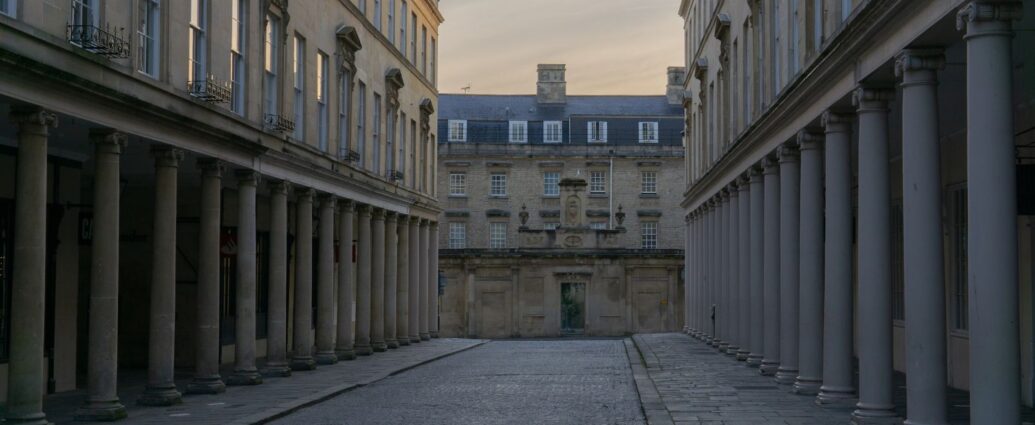Karis Tavernier-Nicholas
The latest instalment of the Bridgerton series, Queen Charlotte: A Bridgerton Story, has taken Netflix by storm, amassing 22 million views in its opening week. Much like its Bridgerton predecessors, Netflix’s Queen Charlotte features a diverse cast. While this diversity has been lauded by some, the series has also received criticism for an alleged lack of historical accuracy.
However, in comparison to other period dramas — which for many years have often lacked any diversity in their cast, unless depicting post-war England — the Bridgerton series arguably holds more historical accuracy than previously thought.
You’d be forgiven for thinking that Queen Charlotte’s Georgian England was a place where everyone looked the same and came from the same places. But, during the 18th century, there were an estimated 20,000 black people living in England, mostly in urban areas like London. Critics are right in some regard; very few people of colour, in particular black people, would have been a part of the Ton and were often working-class. There were, however, exceptions.
People of Colour In 18th Century Britain
“It was a rarity for an illegitimate child to be raised by a family who were part of the Ton, and absolutely unheard of for a mixed-race child”
One such exception is Dido Elizabeth Belle, who lived during the period in which Charlotte – who possibly had black ancestry herself – was queen. The child of Sir John Lindsay and a freed slave, Maria Belle, Dido — remarkably for the time — lived a life similar to that of any other woman born into an aristocratic family in Georgian Britain. At the time, it was a rarity for an illegitimate child to be raised by a family who were part of the Ton, and absolutely unheard of for a mixed-race child.
Why #Bridgerton makes my heart sing. Tapping into Queen Charlotte’s mixed race ancestry & created what SHOULD have been. Diverse & inclusive. The Queen “directly descended from Margarita de Castro y Sousa, a black branch of the Portuguese Royal House.” https://t.co/TvjZmZ6KDQ
— Karima-Catherine (@karimacatherine) December 27, 2020
And yet, Dido’s place as a member of the family is affirmed by David Martin’s infamous painting in which she is featured alongside nobility. What’s striking about this painting is that, unlike most artistic depictions of people of colour in the 18th century, Dido is featured as equal to her white counterpart.
The Tudor Period
Similarly, the only image of a black person in the Tudor age is that of John Blanke. Little is known of Blanke, other than that he was a trumpeter for both Henry VII and VIII, documented as having been paid “20 shillings, 8d. (old pence) each day.”
Perhaps what’s most interesting is that Blanke is featured on a tapestry depicting the celebrations of the birth of Henry VIII’s short-lived son, an inclusion that highlights the significant position he may have held. Blanke lived in close proximity to the monarchy, just like another known person of colour in Tudor England, Catalina of Motril.
Catalina was one of two slaves documented as part of Katherine of Aragon’s entourage when she first arrived in England to marry Prince Arthur. Catalina held the coveted position of ‘Lady of the Bedchamber’ to Queen Katherine, and was even called upon as a witness in Queen Katherine’s annulment trial to testify whether the Queen’s first marriage had been consummated.
Archaeological Evidence Supports Queen Charlotte
“Many of those of African descent would most likely have been slaves, but others would have been ‘ambassadors, pilgrims, musicians, soldiers and craftsmen'”
Evidence of the presence of other races in England has also been found several centuries before the Tudor era.
A study of a community of graves dating back to the Black Death period, for instance, shows that ethnic diversity was still present several centuries after the fall of the Roman Empire, with 30 per cent of the graves examined revealing people who came further afield than Europe, as well as those of dual heritage. The study notes that many of those of African descent would most likely have been slaves, but others would have been “ambassadors, pilgrims, musicians, soldiers and craftsmen.”
Historical Accuracy Of Queen Charlotte: A Bridgerton Story
I am in no way suggesting that English society was a utopian paradise for people of colour, or that they were as accepted as the Bridgerton series sometimes depicts. Neither do I suggest that this exploration is exhaustive of the presence of ethnic minorities in England. Figures such as James Townsend — considered to be the first black MP and Lord Mayor of London — as well as Sara Forbes Bonetta, Queen Victoria’s goddaughter, whose life in England was much akin to the ‘Great Experiment’ seen in Queen Charlotte, are equally historically significant.
So, while Bridgerton may not be wholly historically accurate, it is refreshing to see different ethnicities featured in a period drama. Yes, perhaps people of colour did not occupy as many aristocratic positions as Queen Charlotte depicts. They may have experienced the marginalisation and alienation that comes with racism, but they were still certainly ingrained into English society, well before the mass migration from former British Empire colonies in post-war England.
It’s clear that England has not always had multicultural communities in ways that can be seen today, but the presence of any person of colour in England’s history has for too long been largely forgotten or ignored.
READ NEXT:
-
Bridgerton’s Anthony and Kate: The couple we didn’t know we needed
-
Bridgerton and the Problem with Colour Blind Casting
-
Taylor Swift and Other Girls
Featured image courtesy of Eryk Fudala via Unsplash. No changes were made to this image. Image license found here.

